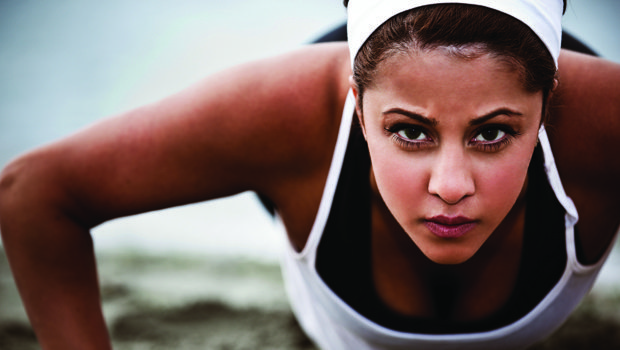Picture Perfect
From Athletes To Astronauts, Mental Imagery Boosts Performance
Last winter, Terry Chiplin went for an early morning run near his Colorado home. Snow crunched as his sneakered feet hit the front porch of his mountain lodge, tucked into a secluded forest. Evergreen boughs glistened in the sun, drooping slightly from the weight of the sparkling white powder. The running coach smiled as he lifted his face to the sky, welcoming the large, wet flakes that kissed his face.
“Can you picture it?” asks the bubbly British native and owner of Active at Altitude, in Estes Park. That is visualization, he explains, a concept he uses regularly at retreats he conducts for runners from beginner to elite as a holistic means of boosting performance. “It’s simply a succession of mental images; we use visualization all the time.”
Whether it’s Tiger Woods envisioning a perfect golf swing minutes before taking a shot or Michael Phelps replaying a mental video of an ideal swim the night before an Olympic event, many athletes have long worked with trainers such as Chiplin to move beyond strictly physical preparation and consciously enlist creative mental capacities to enhance their performance. Using imagery and positive self-talk can improve the efforts of any type of athlete and, as Chiplin’s clients have found, improve their lives.
“The notion that we are just a physical body, so we just need to train physically, is old-fashioned,” Chiplin maintains. Shortly after launching his program six years ago, he learned firsthand how powerful the mind could be in boosting (or sabotaging) performance.
He remarks, “It quickly became apparent that the main issues people face are the mental things, what is happening in their heads.” Chiplin recalls watching runners fall from the peak capabilities they had reached after training hard for endurance events as their mileage tapered off in the final days before the race. Similarly, he thinks the sort of “negative visualization” he witnessed can have a similar impact on everyday life events, such as exams, interviews and job achievement.
Although unclear about its exact mechanism, sports psychologists have long recognized the value of positive mental imagery, especially in building skills and reducing anxiety. In working with athletes, they apply shared models such as those reported in The Sport Psychologist.
Both professional and amateur runners have benefited from Chiplin’s camps, including graduate Ginny Landes, 62, who says visualization techniques have changed her running outlook and her life.
“My goal is not high achievement or personal records; it’s to always finish my run feeling good,” says Landes, of Lafayette, Colorado. As part of the visualizing process, she says she also clears her mind of negative thoughts, stops comparing her performance to others and accepts factors that are out of her control, whether it’s bad race weather or competitive colleagues.
Practicing helpful visualization techniques consistently in daily life can lead to better returns across the board, not just in athletics, according to Terry Orlick, a performance consultant from Ottawa, Ontario, and author of many self-improvement books, including Embracing Your Potential and In Pursuit of Excellence.
Orlick has worked with people from many walks of life that use imagery in their quest for improvement, including surgeons, musicians, pilots, dancers, astronauts and CEOs. When working with Canadian Olympic teams, Orlick found that 99 percent of the athletes practiced visualization an average of 12 minutes per day, four times a week.
Studies have linked imagery and improved performance in a variety of sports. For instance, researchers found that golfers that used visualization and positive self-talk improved their putting performance (Journal of Sports Science & Medicine). Another study showed an increase in confidence among novice female rock climbers, leading to better performance (Journal of Sport Behavior).
For Landes, her personal experience is all the proof she needs. After years of rarely being able to run the entire course of a major annual race in Aspen—generally walking the last stretch—Landes tried visualizing herself having a strong finish as she trained and prepared for the event. For weeks, she replayed the last three miles many times in her mind. Then she ran the race, paring 12 minutes off her previous year’s time. “It felt great,” Landes says, “and it worked.”
Visualization Tips
As with any skill, practice often, gradually increasing the number of sessions.
- For maximum effect, incorporate sounds, smells, colors and feelings to create vivid images.
- Plan imagery to meet current needs. If struggling with a skill, imagine performing it perfectly and confidently many times. If distractions are an issue, imagine remaining calm and focused while dealing with whatever occurs during an event.
Source: Adapted from Association for Applied Sport Psychology
























